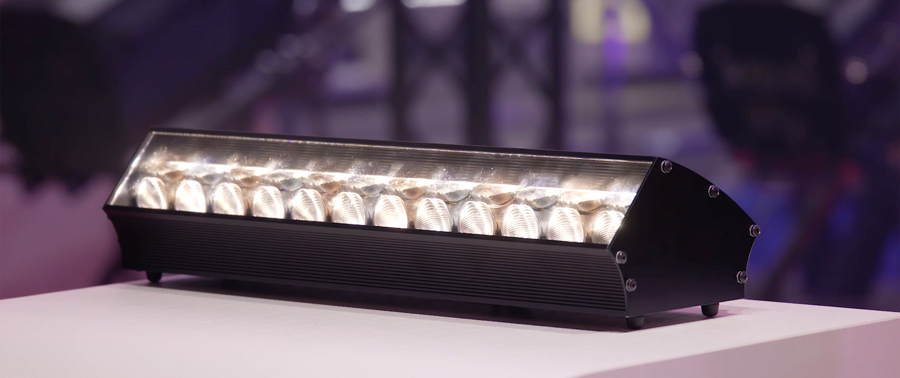On 12 November in Paris, 163 Robert Juliat Dalis 862 footlights took part in the unique Chiroptera show, a collaborative project by JR, Damien Jalet and Thomas Bangalter.
The public gathered at the Place de l’Opéra watched an impressive 20-minute ballet in front of the façade of the Palais Garnier, which was dressed in a huge trompe-l’œil fresco revealing the entrance to a cave, that masked the scaffolding currently covering the façade of the building as it is being restored.
“We worked closely with the three artists behind the project, and came up with a very specific lighting concept,” says Antoine D’Halluin, associate director of Concept K, a French company specialising in artistic creation. “We had to use lighting to serve the show while ensuring all the technology required for such a creation remained invisible to the audience. We therefore deliberately decided on a minimalist use of light sources to concentrate on the human element and bring this creation to life. The Dalis footlights lent themselves perfectly to this exercise.”
A total of 163 Robert Juliat Dalis 862 (1m) and 862S (50cm) footlights were used in variable white (2200K to 6500 K). A dozen Dalis 862S battens were used to illuminate the Prima Ballerina, Amandine Albisson, during the opening solo. The remaining 153 Dalis 862 footlights were clamped on the structure, in front of each of the 153 dancers spread between the uprights of the imposing scaffolding.
“The Dalis 862 footlights offered excellent intensity of colour and uniformity at very close range, with a very even distribution,” explains Antoine. “It’s also a very compact spotlight, with threaded inserts on the underside, so we were able to hang it upside down, above each dancer, and divert it from its traditional use as a foot light at the front of the stage!
“We played constantly with the dimming throughout the show, each batten having its own control based on each dancer movements. A subtle game of synchronisation and programming made it possible for the dancers to appear as required, or even create a giant matrix on which various messages were composed.”
The quality of light from the Dalis battens sublimated the faces of the dancers and their shining white and matt black costumes, putting the human element at the heart of this allegorical work about the tension between light and darkness.
For more information on the Robert Juliat Dalis family of lights









